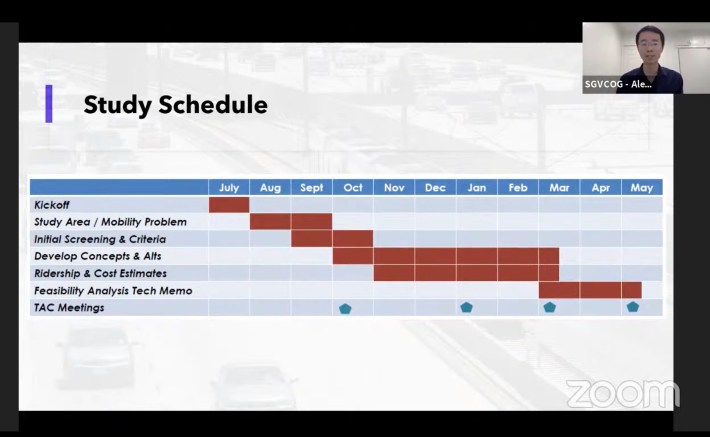The building blocks of a feasibility study for mass transit in south San Gabriel Valley are coming together. In a presentation to the San Gabriel Valley Council of Governments Transportation Committee earlier this month, SGVCOG staff explained how outreach efforts have begun for the San Gabriel Valley Transit Feasibility Study with the convening of the first technical advisory committee which took place on October 27, and a planned community open house scheduled for February or March 2022.
This south San Gabriel Valley mass transit study follows the cancelation of the Interstate 60 alternative for the Eastside L Line (formerly Gold Line) extension. Due to the Metro Board of Directors decision to move forward with the Washington Boulevard alignment, the Metro board allocated $1.5 million toward the feasibility study - with $635 million in Measures M funds set aside to design and build out new SGV mass transit projects.
The study area is broken up into north and south portions, with the south being studied for new projects and the north being studied as an area where projects should integrate with currently existing mass transit options like the Metro L (Gold) Line.
"Though (the south study area is) served by Metrolink and J (Silver) Line, these services are aimed at commuting hours during the weekday, but [existing transit] doesn't support local and north-south trips," said Alexander Fung, senior management analyst for SGVCOG and technical project manager for the study.
The south study area consists of 14 cities including Alhambra, San Gabriel, Monterey Park, Rosemead, Montebello, South El Monte, El Monte, Baldwin Park, La Puente, City of Industry, West Covina, Walnut, Pomona, and Diamond Bar, and unincorporated areas including Avocado Heights, Rowland Heights and Hacienda Heights. All these areas are represented in the project's Technical Advisory Committee by each city's staff, and unincorporated areas are represented by Los Angeles County Public Works and Department of Regional Planning staff, said Paul Hubler, director of government and community relations for SGVCOG and outreach project manager for the study.

The plan is expected to contain four elements: people's travel patterns and mobility needs, identifying activity centers and mobility hubs, getting public input, and identifying opportunities and constraints. The final plan is expected to be completed in May 2022.
Project staff are currently developing a outreach plan that will be carried out next year. Currently, the project's technical advisory committee will have three more meetings, with the next one scheduled for January 2022. Staff also expect to make presentations to elected officials and staff in the study area cities and unincorporated L.A. County.
SBLA San Gabriel Valley coverage, including this article and SGV Connect, is supported by Foothill Transit, offering car-free travel throughout the San Gabriel Valley with connections to the new Gold Line Stations across the Foothills and Commuter Express lines traveling into the heart of downtown L.A. To plan your trip, visit Foothill Transit. “Foothill Transit. Going Good Places.”
Sign-up for our SGV Connect Newsletter, coming to your inbox on Fridays.







